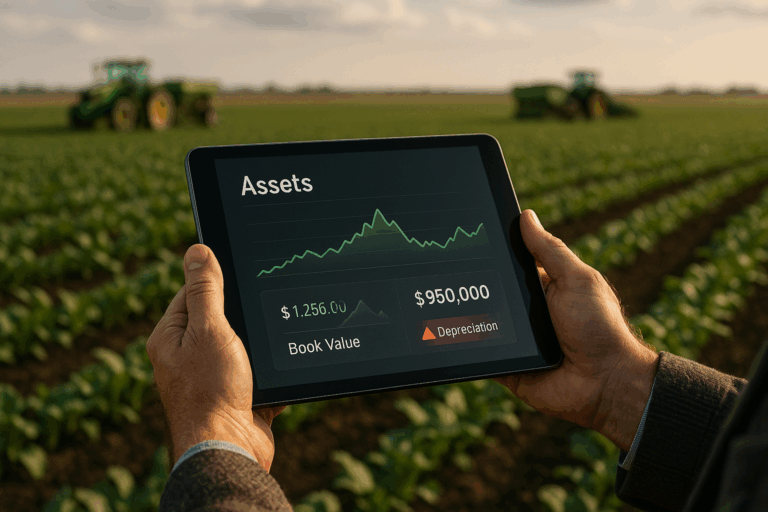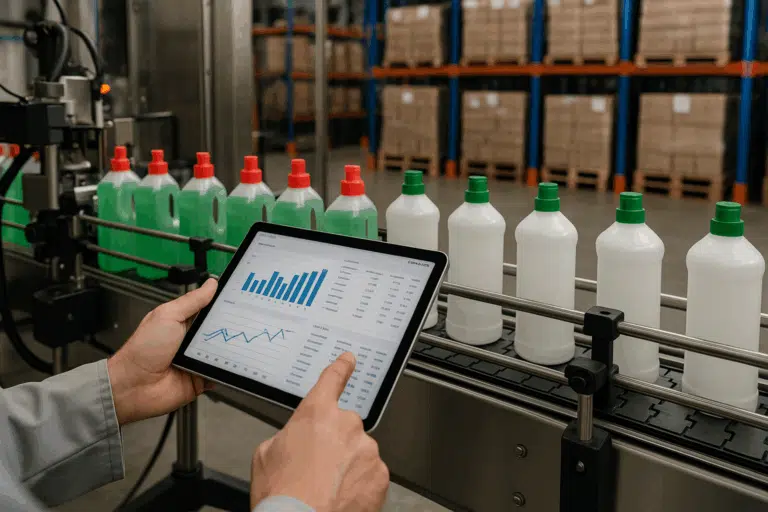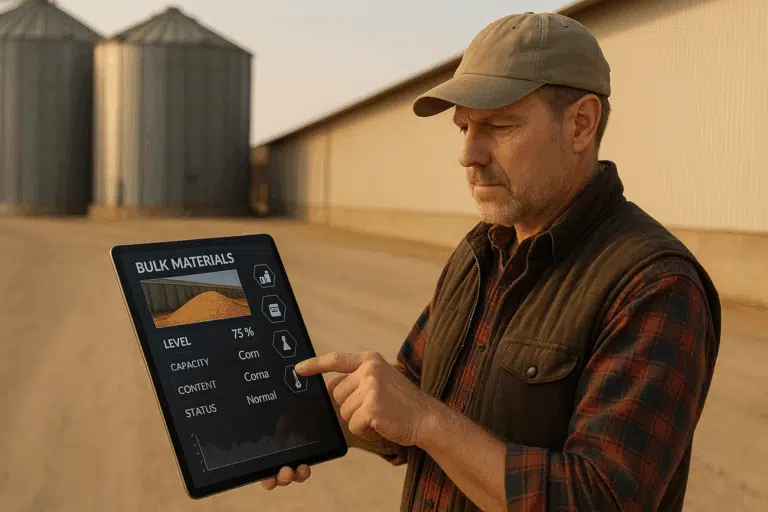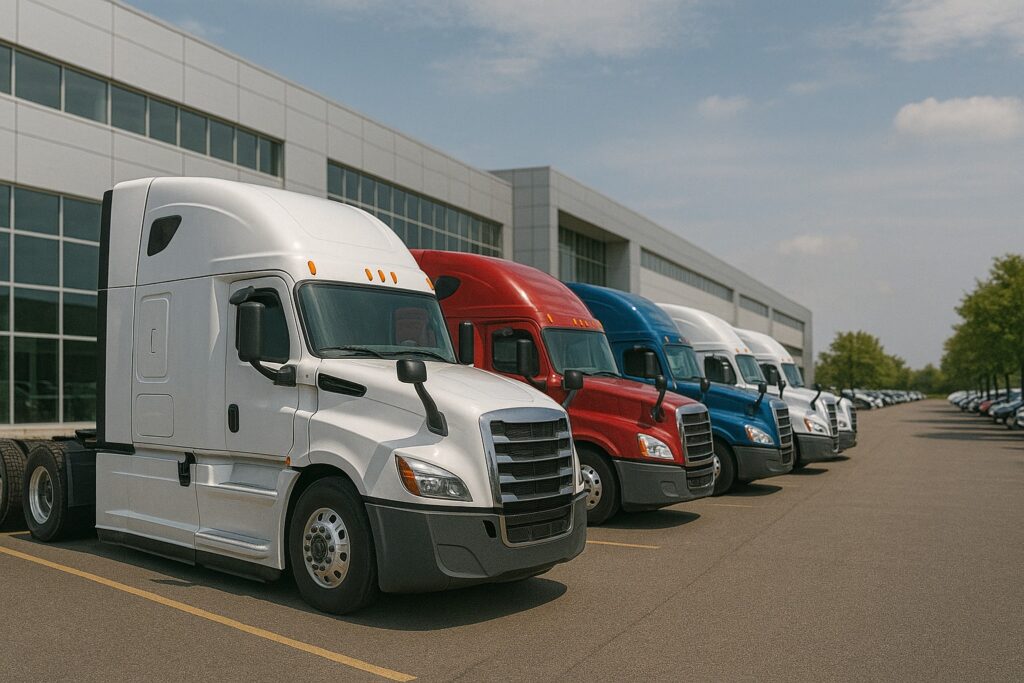Is your asset management system working well? Or could it be better with better inventory count methods? Asset tagging is key for any business to track and manage its physical assets well. In this guide, we’ll explore asset taggers and how they fit into your business.
With new tech like RFID, QR codes, and NFC taggers, a good asset tagging system can make your operations better. We aim to give you the knowledge and tools to improve your asset management. From the basics to how to use them in your business.
Table of Contents
ToggleKey Takeaways
- Understanding the importance of asset tagging for effective asset management.
- An overview of various asset tagger systems including barcodes, RFID, and QR codes.
- Step-by-step guidance on setting up an asset tagging system in your business.
- Key advantages such as improved accuracy, efficiency, and regulatory compliance.
- Insights into addressing common challenges in asset tagging implementations.
- Exploring future trends in asset tagging technology, including IoT and AI integration.
What is an Asset Tagger?

An asset tagger is a tool that helps track and manage assets. It uses tags like barcodes and QR codes. This makes tracking assets easy and saves money. It’s key for keeping track of things in today’s world.
Definition and Functionality
An asset tagger labels and identifies assets with tags. It helps from start to finish, keeping track of assets. It’s great for places where things often get stolen.
Key Components of an Asset Tagger System
An asset tag system has important parts. These parts work together well. They include:
- Tags: Like barcodes and QR codes, each has its own use.
- Scanners/Readers: These help find and track assets.
- Asset Tagging Software: This keeps and updates asset records.
- Data Analytics: It analyzes data to help use assets better.
As things get automated, these parts become more important. For example, in healthcare, tags help track equipment. This makes things run smoother. In defense, tags follow strict rules for security. And in oil and gas, tags help collect data automatically.
| Industry | Application of Asset Tags |
|---|---|
| Healthcare | Efficient tracking of medical and scientific equipment |
| Construction | Preventing job site theft and managing tools |
| Defense | Compliance with precise asset identification guidelines |
| Oil and Gas | Automated data collection to reduce compliance risks |
| Telecommunications | Mapping assets and managing maintenance |
| Manufacturing | Ensuring asset traceability and maintenance scheduling |
Knowing how to use an asset tagger is important. It helps businesses run better and save money. The right tools and software make things more visible and efficient.
Types of Asset Taggers
In today’s world, keeping track of assets is key to being efficient. There are many asset tagging systems out there. Each one has special features to fit different needs. Let’s look at the main types: barcode, RFID, QR code, and NFC tags.
a. Barcode Taggers
Barcode taggers are cheap and popular for managing assets. They use barcodes that can be scanned to find asset info fast. A barcode asset tagger makes tracking inventory easy and quick.
b. RFID Taggers
RFID taggers read tags wirelessly from far away. This makes tracking assets much faster. An RFID asset tagger is great for big inventories and quick checks.
c. QR Code Taggers
QR code taggers hold more data than barcodes. With QR code asset tagging, you can get asset details quickly with a smartphone. They’re also customizable for different needs.
d. NFC (Near Field Communication) Taggers
NFC taggers work close up for secure asset tracking. NFC tags are good for keeping sensitive assets safe. They’re also used for things like ID cards and access control.
| Asset Tagger Type | Features | Advantages |
|---|---|---|
| Barcode Tagger | Printed Barcodes, Scanned by Readers | Cost-effective, Easy implementation, Fast identification |
| RFID Tagger | Wireless Reading, Simultaneous Tag Reading | Increased read range, Efficient bulk processing, Remote tracking |
| QR Code Tagger | Storing Detailed Data, Smartphone Compatibility | High data capacity, Customizable, Quick access |
| NFC Tagger | Close-Range Communication, Secure Transactions | Enhanced security, Versatile applications, Suitable for sensitive assets |
How Does an Asset Tagger Work?

Setting up an asset tagger system involves several steps. It’s important to follow best practices. The main goal is to track assets well by giving each one a unique ID. This is done by keeping records up to date in a system that manages assets over time.
Step-by-Step Process of Asset Tagging
The process of asset tagging includes:
- Selection of Appropriate Tags: Pick tags that are tough and easy to read. This helps avoid the need to replace them often.
- Tag Application: Use strong adhesives or mechanical methods to attach tags. Make sure they’re in places that are easy to see and won’t fall off.
- Data Entry: When you get an asset, add it to a tracking system. Include details like serial numbers and where it’s located.
- Updating Records: Keep the tracking system up to date. Change records when the asset’s status or location changes.
Common Challenges and Solutions
Even with its benefits, asset tagging systems can face challenges. Here are some common problems and how to solve them:
| Challenge | Solution |
|---|---|
| Selecting Appropriate Tags for Different Assets | Study the environment of each asset. Choose tags that fit the industry, like UID/IUID tags for defense. |
| Resolving Technical Issues | Test everything thoroughly before you start. Work with suppliers like Asset Panda for solutions that fit your needs. |
| Theft and Loss Prevention | Use tags that show if someone has tried to remove them. Keep accurate records to track everything. |
| Manual Entry Errors | Use barcode or QR code scanning to cut down on mistakes. This makes data more reliable. |
Using asset tagging systems right can bring big benefits. It can reduce mistakes, help make better decisions, and keep assets safe. By following best practices and solving common problems, companies can manage their assets well and track them easily.
Use Cases for Asset Taggers
Asset taggers are key in many fields. They help with inventory control, fixed asset tagging, and maintenance management. These tools make tracking and managing assets easier and more accurate. This is very important for places like manufacturing, healthcare, and logistics.
a. Asset Tagging in Different Industries
In manufacturing, asset tagging is very important. It helps prevent theft and saves money by tracking equipment. Asset tags can hold up to 7000 characters, making it easy to keep track of each item.
b. Inventory Management
Good inventory control needs accurate and timely data. Asset tags, especially RFID tags, make inventory more accurate by 65%-95%. They help track assets in real-time, making workflows faster and reducing manual work.
The US government uses asset tags to manage and monitor assets efficiently. This shows how valuable this technology is in different areas.
c. Fixed Asset Management
Fixed asset tagging helps track and manage valuable items. It stops unauthorized use and theft. Tags provide detailed info on each asset’s location, condition, and history. They are made to last, even in tough environments.
Tags can also help recover lost equipment. They include the manufacturer’s name and contact info, but keep sensitive data safe.
d. Maintenance Management
Asset tagging is crucial for maintenance management. It makes scheduling and logging maintenance easier. This helps keep equipment running smoothly and extends its life.
QR codes and RFID tags store lots of data. They help with maintenance logs and warranty details. This makes decision-making easier and helps follow rules.
| Sector | Asset Tagging Benefits |
|---|---|
| Manufacturing | Enhanced asset tagging for manufacturing, prevention of unauthorized use, theft deterrent. |
| Logistics | Real-time location tracking, improved inventory control, efficient workflows. |
| Healthcare | Accurate asset tracking, better resource allocation, compliance with health regulations. |
| Government | Efficient management of fixed and movable assets, streamlined auditing processes. |
Benefits of Using an Asset Tagger

Asset taggers change the game in business. They do more than track things. They make things more accurate, efficient, and follow rules better.
Improved Accuracy and Efficiency
Asset taggers make things more accurate and efficient. They can make inventory accuracy go from 63% to over 95%. This is key to fewer mistakes during efficient stock taking procedures.
They also make it easy to find out about repairs and use. This makes things run smoother.
Enhanced Asset Visibility
Asset tagging makes finding things easier. It cuts down on time looking for equipment. For example, nurses used to spend a lot of time finding medical gear.
With asset tracking, they save time. This makes everyone more productive.
Cost Savings
Asset taggers also save money. They help figure out which equipment is used the most. This means better use of resources.
They also cut down on paperwork. This frees up people to do more important things.
Regulatory Compliance
Keeping up with rules is important. Asset tagging helps with audit compliance. It makes sure all assets are tracked and documented.
Not following rules can cost a lot. OSHA fines can be up to $145,027. Asset tagging helps avoid these fines.
Streamlined Operations
Asset tagging makes things run smoother. It tracks where things go and when they need maintenance. This is key for businesses that rely on assets.
It also makes customers happier. It stops double-bookings and makes sure things are ready on time.
Asset tagging is a big win. It improves accuracy, efficiency, visibility, and saves money. It’s a great tool for managing inventory and assets today.
| Benefit | Description |
|---|---|
| Improved Accuracy | Enhances inventory accuracy from 63% to over 95% |
| Efficiency | Provides instant access to data for repairs and maintenance |
| Visibility | Reduces time spent searching for assets, boosting productivity |
| Cost Savings | Optimizes asset utilization, reducing unnecessary costs |
| Compliance | Ensures adherence to regulatory standards to avoid fines |
| Operational Streamlining | Optimizes workflow by tracking asset movements and schedules |
Choosing the Right Asset Tagger for Your Business
Choosing the right asset tagger is key for your business. The global asset tracking market is set to hit $36.3 billion by 2025. Investing in asset tags can really help your business grow.
Assessing Business Needs
First, know what your business needs. You might need tags for inside or outside use. You can use sequential or hybrid tagging methods.
Think about your environment and the assets you need to tag. Polyester, polypropylene, and vinyl tags work well inside. But foil and rigid anodized aluminum tags are better for outside.
Tag Type Selection
It’s important to know the different tags available. You can choose from barcode, RFID, QR code, NFC, GPS, and BLE tags. Each type is good for different tracking needs.
RFID tags, for example, hold a lot of data and can be read from far away. They’re great for assets that are hard to reach or very valuable.
Hardware and Software Requirements
Choosing the right hardware and software is crucial for smooth operations. Make sure your scanners work well with asset management platforms. The SafetyCulture guide can help with this.
Look for technology that can handle outdoor conditions and extreme temperatures. It should also meet industry standards.
Scalability Considerations
A good solution should grow with your business. Think about how easy it is to add more technology and support. RFID tags, for example, are great for tracking lots of assets.
Asset tagging can improve security, maintenance, and asset value. It also helps with regulations. Plan carefully to get the most benefits for your business.
Implementing an Asset Tagger System: Best Practices
Setting up an asset tagger system needs careful planning and following best practices. This ensures it works well and accurately. Check out this asset tagging system setup guide for tips on counting inventory and managing it well.
Step 1: Planning and Inventory Analysis
Start with detailed planning and inventory analysis. Sort assets by type, value, or use. Give each asset a unique ID for better tracking and resource use. Knowing where and what assets are in real-time makes audits faster and more accurate.
Step 2: Tag Selection and Procurement
Choosing the right tags is key for their durability and use. RFID and NFC tags are great for tracking, especially for hard-to-reach assets. Make sure tags can last in the asset’s environment and are easy to scan. Set a minimum value for assets to tag to focus on the most important ones.
Step 3: Testing and Pilot Program
A pilot program is crucial before going full-scale. It lets you check if tags are placed right and data is correct. Testing effective inventory handling procedures in a small area helps find and fix problems before the big launch.
Step 4: Full Rollout and Training
A successful launch needs good training. Make sure everyone knows how to use the system and software. This helps avoid problems and keeps things running smoothly.
Step 5: Ongoing Maintenance and Review
Keeping the system up and checking it regularly is key. Regular audits and updates help manage resources and reduce downtime. Having a team for maintenance keeps things consistent and on track. Looking at how assets are used helps make smart choices on repairs and replacements.
Common Pitfalls to Avoid When Using an Asset Tagger
Using an asset tagger well needs a smart plan. We’ll look at common mistakes and how to steer clear of them.
Inadequate Tagging Plan
Not having a solid tagging plan is a big mistake. For good asset tagging for loss prevention, you must check all your assets. This includes everything from big machines to small items like fridges and water heaters.
Make sure each asset is well described. Include its condition, where it is, who uses it, and its maintenance history. This makes your inventory better and helps with inventory auditing best practices.

Ignoring Software Integration
Not using software with your asset tagger is another mistake. Tools like BlueTally, linked to Azure AD, Intune, and Jamf, make tracking easier. They help manage your inventory well and follow inventory reconciliation guidelines.
Good software also makes printing tags simple. This keeps your tags up to date and ready to use.
Insufficient Training
Not training staff enough is a big problem. It’s key that everyone knows how to use the asset tagger and the software. Training stops mistakes and keeps things running smoothly.
It also helps fight fraud and theft. This can save companies up to 5% of their yearly income.
Tag Deterioration Over Time
Finally, think about how tags might wear out. Tags like barcode, QR codes, RFID, or NFC can get damaged. Regular checks and new tags keep things accurate.
Using strong tags and keeping them up helps follow inventory reconciliation guidelines. This cuts down on mistakes and loss.
Future Trends in Asset Tagging Technology
Asset tagging technology is changing fast. We’re seeing big steps forward. These include IoT, AI, and blockchain.
Integration with IoT (Internet of Things)
IoT is a big deal. It lets us watch assets in real time. We can see where they are, how they’re doing, and how they’re used.
This helps us keep track of things better. It makes sure we use our assets well. And it saves us money.
IoT also helps us plan maintenance better. It lets us fix things before they break. This way, our assets last longer and we don’t have to stop work as much.
AI and Predictive Analytics
AI and predictive analytics are changing how we track assets. They use smart algorithms to understand how assets work. This helps us make better choices about our assets.
For example, AI can spot problems before they happen. It helps us keep our assets running smoothly. It also helps us have the right amount of inventory.
Blockchain for Asset Tracking
Blockchain is another big step. It makes sure our asset data is safe and true. It’s like a digital record book that can’t be changed.
This helps us solve problems like theft and fake data. It makes our asset tracking system strong and trustworthy.
By using these new ideas, we can do a better job of managing our assets. IoT, AI, and blockchain make our system smarter, safer, and more efficient.
Conclusion
In this guide, we explored the importance of asset tagging for businesses. We looked at different types of asset taggers like barcode, RFID, QR code, and NFC. Each has its own uses in industries like manufacturing, healthcare, retail, and education.
Summarize the Key Points Discussed
We started with the basics of asset tagger systems. They make tracking and managing assets more accurate and efficient. This leads to better visibility, cost savings, and following rules.
We also talked about how to set up an asset tagger system. This includes planning well, checking your inventory, and keeping things running smoothly.
Importance of Choosing the Right Solution
Choosing the right asset tagging solution is key. Look at durability, technology type, and if it fits with your systems. Good tagging helps with maintenance, extends asset life, and meets rules.
The right solution also gives you real-time asset location info. It cuts down on costs and stops theft.
Get in Touch
At The CPCON, we offer expert advice and custom asset tagging solutions. Our team is here to help, whether you’re big or small. Contact The CPCON to improve your asset management today.
FAQ
What is an asset tagger?
An asset tagger is a tool for managing and tracking assets. It uses barcodes, RFIDs, and QR codes. It makes it easier to update records and track assets over time.
What are the key components of an asset tagging system?
An asset tagging system has several parts. These include tags like barcodes and QR codes. You also need software and scanners for each tag type. Plus, a system for keeping and analyzing records.
What types of asset taggers are available?
There are many types of asset taggers. Barcode taggers are affordable. RFID taggers work wirelessly. QR code taggers hold more data. NFC taggers are secure for close communication.
How does an asset tagger work?
Asset tagging works in steps. First, choose the right tags. Then, assign unique identifiers. Next, attach the tags to assets and update the data.
Scanning the tags keeps records current.
What industries commonly use asset taggers?
Many industries use asset taggers. These include manufacturing, logistics, healthcare, and IT. They use it for inventory, asset management, and maintenance.
What are the benefits of using an asset tagger?
Asset taggers improve accuracy and efficiency. They make assets easier to see and save money. They also help follow rules and make operations smoother.
How do I choose the right asset tagger for my business?
To pick the right asset tagger, know your business needs. Choose the right tag type and hardware. Think about scalability. Make sure it fits your operations well.
What are the best practices for implementing an asset tagger system?
For a good implementation, plan well and analyze your inventory. Choose tags carefully and test them first. Roll out the system with training. Keep it up to date and review it often.
What common pitfalls should be avoided when using an asset tagger?
Avoid not planning well, not integrating software, and not training enough. Also, don’t forget about tag wear and tear. Plan ahead and follow best practices to avoid these issues.
What are the future trends in asset tagging technology?
Future trends include IoT for real-time monitoring and AI for smarter management. Blockchain will make tracking records permanent. Keep up with these trends to stay ahead.



























